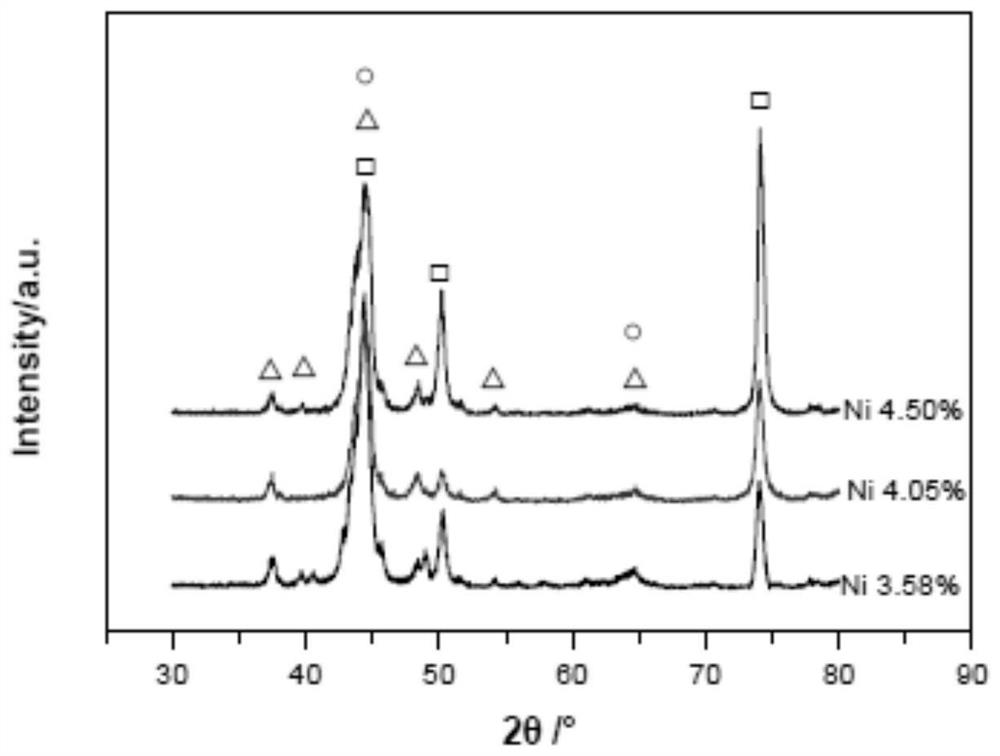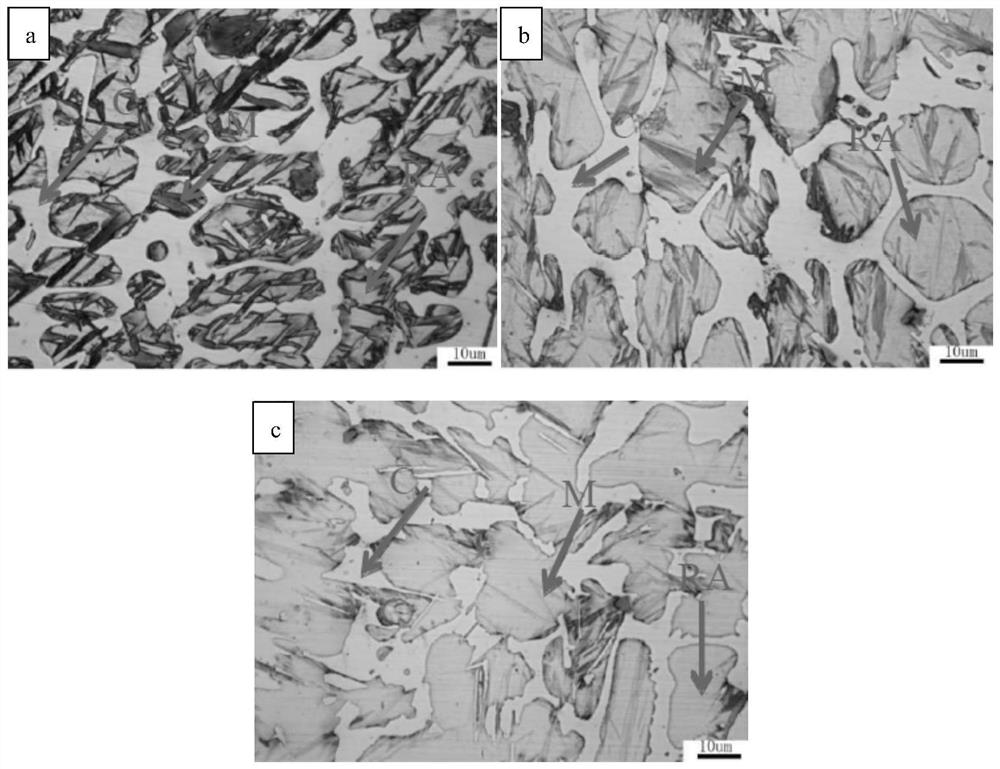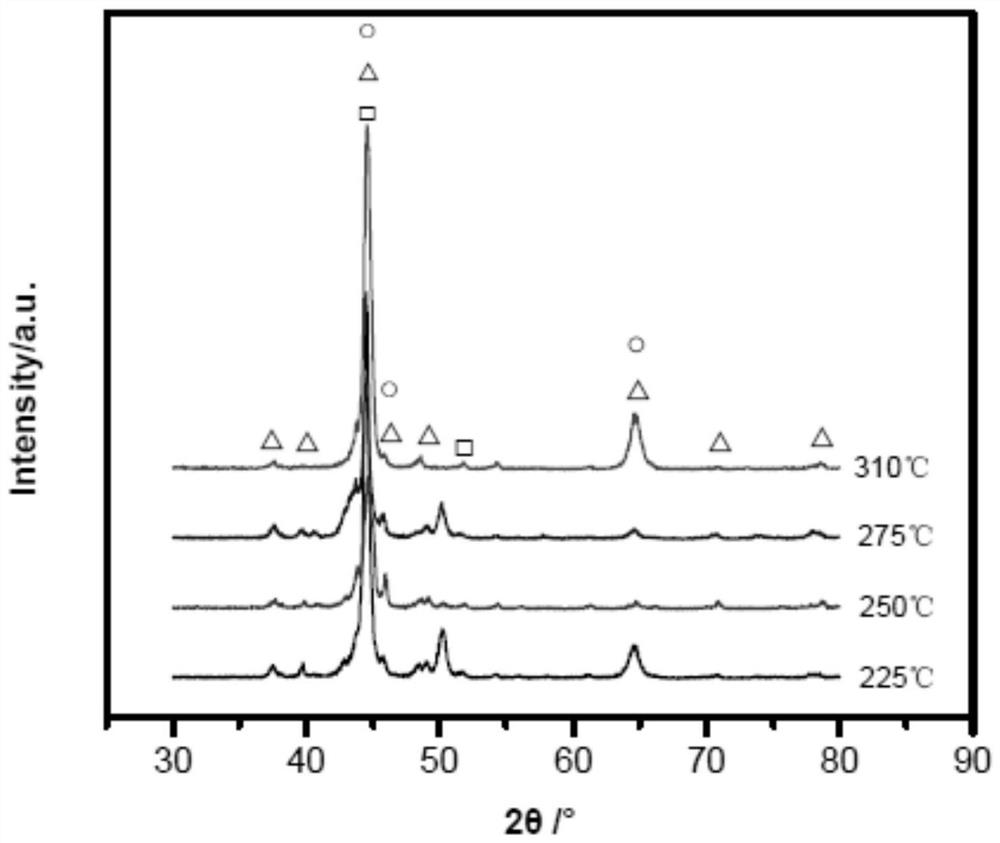A method for preparing nickel-hard type I cast iron by using red mud to separate slag and iron efficiently
A technology of slag-iron separation and red mud, applied in the field of metallurgy, can solve the problems of low iron-nickel alloy iron content, various application principles, insufficient iron separation, etc., achieve high iron quality, complete separation, and reduce production costs Effect
- Summary
- Abstract
- Description
- Claims
- Application Information
AI Technical Summary
Problems solved by technology
Method used
Image
Examples
Embodiment 1
[0040] A method for preparing nickel-hard cast iron, including the following steps:
[0041](1) After mixing Bayer method, the red soil nickel mine is mixed according to 7: 3 mass ratio, and the mass of 20% coke is added to the mixture, and the mass 3% of the mass is mixed, and the mass is 5%. The concentration was 4% aqueous sodium silicate solution, and then mixed uniform, cold pressure was dried in a drying tank at 60 ° C for 2 h, resulting in a mixture;
[0042] (2) After preheating the mixture at a temperature of 340 ° C for 3.5 h, it is placed in a medium-frequency induction furnace to heat reduction to obtain a ferric alloy; Image 6 As shown, iron alloy and slag separation thoroughly, resulting in the outer surface of the ferric alloy);
[0043] (3) After the iron alloy is added to the carbon-carbon-proof treatment, the addition of nickel, chrom is prepared into nickel coastal iron; the nickel content is added to a total nickel content of 3.58 wt.%, And the chromium content...
Embodiment 2
[0045] The difference from Example 1 is:
[0046] (3) After the iron alloy is removed, the addition of nickel is added to the addition of nickel, and the chrom is prepared into nickel coarse iron; the nickel content is added to a total nickel content of 4.05 wt.%, And the chromium content is added to a total chromium content of 1.88 wt.%.
Embodiment 3
[0048] The difference from Example 1 is:
[0049] (3) After the iron alloy is removed, the addition of nickel is added to the addition of nickel, and the chromium is prepared into nickel coarse iron; the nickel content is added to a total nickel content of 4.50 wt.%, And the chromium content is added to a total chromium content of 2.21 wt.%.
[0050] First, the nickel hard cast iron prepared by Example 1-3 was performed as follows:
[0051] Chemical composition analysis
[0052] Test the chemical composition analysis of cast iron alloy samples using ARL8860 direct reading spectrometer. Before the test, the oxidation of the sample surface was grinded with a grinding wheel, and then the sample was placed on the sample stage. The chemical composition obtained is in Table 2.
[0053] Table 2
[0054]
[0055]
[0056] The iron content of nickel-hard cast iron was 90.283 to 90.719%, and the chemical composition of each group was composed of nickel hard type I cast iron requirements...
PUM
| Property | Measurement | Unit |
|---|---|---|
| L | aaaaa | aaaaa |
| L | aaaaa | aaaaa |
Abstract
Description
Claims
Application Information
 Login to View More
Login to View More - R&D
- Intellectual Property
- Life Sciences
- Materials
- Tech Scout
- Unparalleled Data Quality
- Higher Quality Content
- 60% Fewer Hallucinations
Browse by: Latest US Patents, China's latest patents, Technical Efficacy Thesaurus, Application Domain, Technology Topic, Popular Technical Reports.
© 2025 PatSnap. All rights reserved.Legal|Privacy policy|Modern Slavery Act Transparency Statement|Sitemap|About US| Contact US: help@patsnap.com



